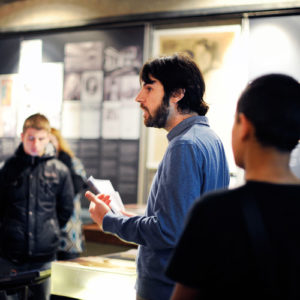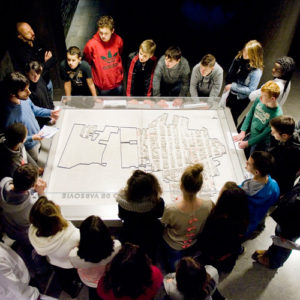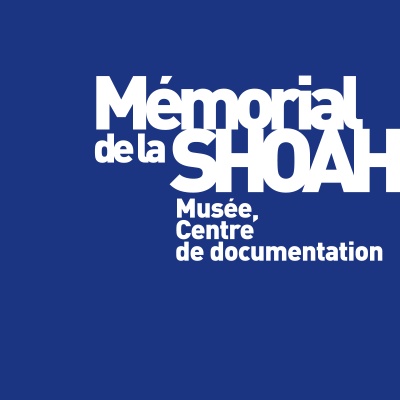Tips for teaching the history of the Holocaust in middle school and high school
How to approach genocidal history with high school classes? The pedagogical team of the Memorial has drafted, with teachers, a set of operational advice for middle and high school teachers.
Addressing the Shoah in class, whether it is done in middle school or high school, is never trivial. For many teachers, and their perception seems legitimate to us, this episode of the Second World War is a particular moment in our contemporary history. The number of victims, the very nature of these: men, women, children, young, old, sick or well, etc., the way they were murdered, the administrative and industrial machine that made possible what seems to come out of understanding, all this gives the course on the Shoah a dimension whose emotional charge seems to exceed everything that the students have been able to learn so far, but also everything that the teachers have been able to transmit during the current year.
Overflown, even ignored during the 1970s and 1980s, the teaching of the Shoah has today taken a place in class if not predominant, at least essential which makes this course often a highlight of the year. It is precisely there that the issue arises:
Should the teaching of the Shoah be made a deliberately emphasized teaching, charged with an emotion heard in relation to the other chapters addressed during the year or should it be-does he integrate it into the logical and chronological continuity without making it a particular moment of the year in history class?
The tragic dimension of the Shoah and the questions that arise from it do not seem to allow us to approach this teaching like any other.
However, we think that precautions must be taken to avoid certain pitfalls.

© Florence Brochoire
History class, no morals
The teaching of the Shoah can and must appeal to emotion, to the affective, but these do not provide the material for a history course. Settling for the emotional is not making history. For example, listening to the testimony of a survivor of the death camps cannot serve as a course on the Shoah for middle school and high school students, but it is very useful and informative in addition.
Reading poignant testimonies of hidden children, tragic stories of Polish ghettos, of survivors whose families have disappeared can only come in supplementary work but does not seem to us to be the heart of a course on the extermination of the Jews.
However, these writings can be used by the professor as pretexting documents for putting them into perspective in the context of the global project that was the Shoah.
Indeed, it seems to us that the teaching of the Shoah should not be limited to a moral course, in the moralizing sense of the term, which would amount to a guilt-inducing "never again".
In fact, the Holocaust is a historical event and must be addressed as such. It is then necessary to make the students understand that extermination is the ultimate step of a process well highlighted by the American historian Raul Hilberg: definition, exclusion and spoliation, concentration and liquidation.
Importance of the right word
The course must call upon precise knowledge. Thus, the vocabulary must be fair and mastered. The professor must, for example, be careful with the use of executioners' words and systematically use them in quotes; the use of terms concerning the different camps (internment, concentration, death centers rather than extermination) must make it possible to insist on the differences in treatment between the populations who are transported there.
The professor must also insist on the vocabulary used by the Nazis themselves, as well as that concerning the Jews who aim to dehumanize them, on its scope and trivialization, than that concerning the murder of millions of people which aims to conceal the horror and the magnitude of the crime of which the Nazis were aware.

© Florence Brochoire
Speed and simultaneity
The professor, it seems to us, must insist on the late decision of the «Final Solution» (end of summer-autumn 1941) and link it not only to the progressiveness of the anti-Semitic discourse and violence but also to the war in the East against «Judeo-Bolshevism». Thus, the massacres perpetrated by the Einsatzgruppen on the Eastern front cannot be forgotten (1.5 million deaths by shooting).
The speed of execution must also be highlighted. Thus, the teacher can show the students, using the example of France, that between March 27, 1942 (date of the first convoy leaving from France to Auschwitz) and September 30, 1942 (convoi no. 39) half of the Jewish victims who left France have already been deported; three quarters are on December 7, 1943 (convoy no. 64). We can consider that between March 1942 (beginning of Operation Reinhardt) and November 1943, three-quarters of the Jews who were victims of the Holocaust died. In 1944, 434,000 Jews from Hungary were deported in 7 weeks to Auschwitz-Birkenau (from 16 May to 9 July 1944).
The professor may also insist on the coincidence of the actions carried out by the Nazis: thus, on July 16-17, 1942, the Winter Velodrome Roundup took place in Paris; on July 22, the great deportations from Warsaw began, which lasted until September, (during which 300,000 people are sent to Treblinka and murdered). Between these two dates the decision was taken to build the four large crematoria at Birkenau by Himmler himself.
How is the executioner forged
The professor may also, relying in particular on the work carried out by the historian Christopher Browning, reflect with the students on the ordinary aptitude of men to an extraordinary inhumanity, to the banality of assassins and evil, but also to blind submission to the Law, to obedience to authority legitimized by ideology and indoctrination, to the concern for conformity with the group which constitute factors that can lead ordinary men to become assassins according to circumstances.
Plural genocides
In order to situate the Shoah well in history, the teacher can engage, if the students directly or indirectly request it, in a quick work of comparison. This must allow for a better characterization of the Shoah, to better identify its specificities but also its uniqueness and not, obviously, to sweeten or relativize it:
Quickly address, for example, the genocide of the Tutsi in Rwanda (1994) can possibly reveal the common points between the speeches of Nazi leaders and those of Hutu leaders but also the stated desire to exterminate a population right down to the last of its members, starting with the children. The artisanal mode of the Rwandan genocide contrasts with the industrial mode of the extermination of the Jews of Europe and it is a difference that can be made visible.
Whatever the courses and their content, it seems to us that teaching the Shoah requires a fine knowledge of the subject and the questions it raises.


